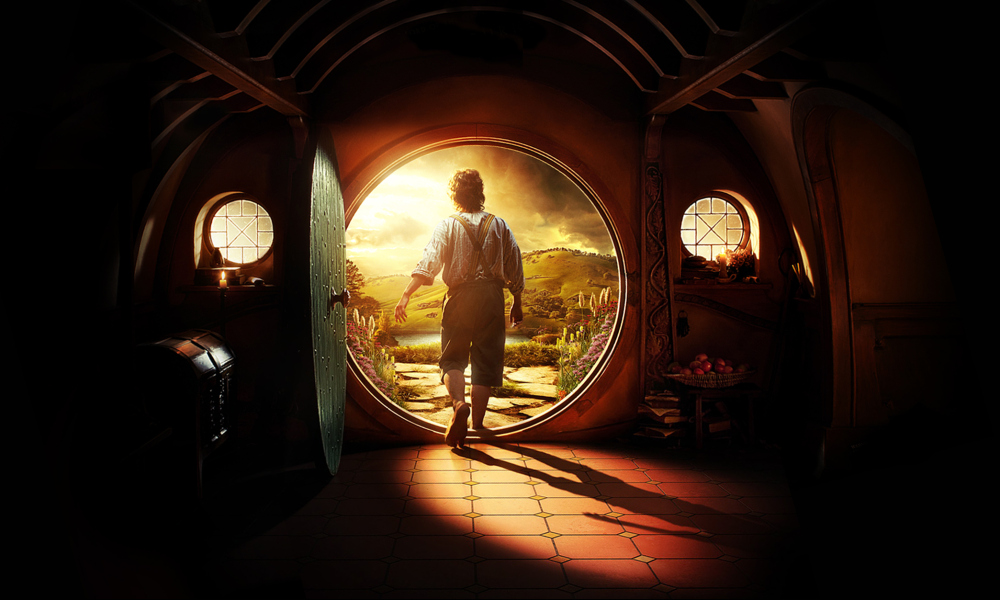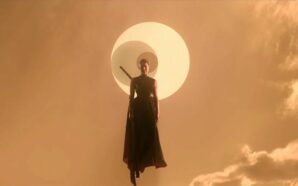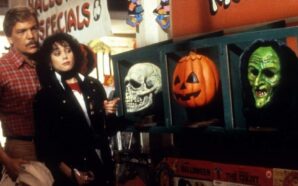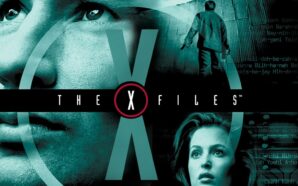During this past housebound spring – brought to you by the Coronavirus – I sat for endless hours deciding which films to watch in order to idle away the hours. To pass as much time as possible, my eyes drifted to the longest movies in my collection: my 15-disc boxset of The Lord of the Rings trilogy. And then they glanced slightly to the right and noticed a similar set for The Hobbit trilogy. Those later prequels have been sat on my shelf untouched since not long after I bought them and I’ve never revisited the trilogy, certainly not to the same level as The Lord of the Rings. I watched the films at the cinema and enjoyed them for the most part, but The Hobbit just never had anything close to the impact as the earlier trilogy did when I was growing up. I remember them as flawed but fun, and not something I ever bothered to re-experience. But now, under lockdown, what excuse is there? So, I reached for The Hobbit trilogy rather than The Lord of the Rings for the first time to see whether these somewhat forgotten films deserve a closer look.
 On this rewatch, trying to look at the films critically, it was monumentally difficult to compare The Hobbit films to The Lord of the Rings because of the nostalgia and childhood love I have for the first trilogy, from the music to the characters to, basically, every level of production. Where does honest critique end and emotional bias begin? How much worse are The Hobbit films when it’s totally impossible for me to enjoy them as much as The Lord of the Rings even if they were objectively just as good? It’s also worth noting that I watched the extended edition for this review because, like The Lord of the Rings before them, I see the extended cuts as the definitive versions of the films. Also, I’m going to abbreviate The Lord of the Rings to LotR going forwards because it just takes far too long to write.
On this rewatch, trying to look at the films critically, it was monumentally difficult to compare The Hobbit films to The Lord of the Rings because of the nostalgia and childhood love I have for the first trilogy, from the music to the characters to, basically, every level of production. Where does honest critique end and emotional bias begin? How much worse are The Hobbit films when it’s totally impossible for me to enjoy them as much as The Lord of the Rings even if they were objectively just as good? It’s also worth noting that I watched the extended edition for this review because, like The Lord of the Rings before them, I see the extended cuts as the definitive versions of the films. Also, I’m going to abbreviate The Lord of the Rings to LotR going forwards because it just takes far too long to write.
And so, The Unexpected Journey. Just on a basic level, it’s wonderful seeing ‘The Hobbit’ written in that LotR font as it comes onscreen, as well as the same opening music as the earlier Middle Earth films. Every hint of music from LotR, the soundtrack of my childhood, throughout The Hobbit trilogy gives me goosebumps. While I didn’t remember any new tracks from Howard Shore’s score for these films before rewatching them, a couple stood out on this revisit, primarily the orchestral version of ‘Misty Mountains Cold’ which accompanies the Dwarves any time they leap, or tumble, into action.
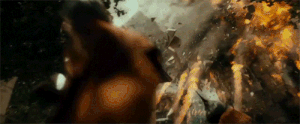 And yet, despite my struggle with nostalgia, I think An Unexpected Journey (which I’m already struggling not to call The Undiscovered Country) begins with a sequence just as good as anything in The Lord of the Rings. Old Bilbo narrates the history of Erebor and how Smaug came to hold the Lonely Mountain in a prologue not too dissimilar to the one found in The Fellowship of the Ring. It’s a great sequence of needed, distilled exposition that inflames the lore fiend inside of me. It’s a neat trick to hide Smaug the dragon during the sequence, instead keeping him from view until the sequel. His attack on Dale is well shot and the settlement looks eerily similar to King’s Landing from Game of Thrones. Now that we live in a post-Game of Thrones world, I’m eager to see how they handle the dragon attacks in the following films.
And yet, despite my struggle with nostalgia, I think An Unexpected Journey (which I’m already struggling not to call The Undiscovered Country) begins with a sequence just as good as anything in The Lord of the Rings. Old Bilbo narrates the history of Erebor and how Smaug came to hold the Lonely Mountain in a prologue not too dissimilar to the one found in The Fellowship of the Ring. It’s a great sequence of needed, distilled exposition that inflames the lore fiend inside of me. It’s a neat trick to hide Smaug the dragon during the sequence, instead keeping him from view until the sequel. His attack on Dale is well shot and the settlement looks eerily similar to King’s Landing from Game of Thrones. Now that we live in a post-Game of Thrones world, I’m eager to see how they handle the dragon attacks in the following films.
While the prologue does a good job of setting the stage, I think the extended scene between Ian Holm’s Bilbo and Elijah Wood’s Frodo is unnecessary. It’s certainly nice to see these characters and actors again but the scene feels indulgent, especially because it covers the same ground as the opening of The Fellowship of the Ring. I don’t need yet more ranting about the thieving traits of Sackville-Bagginses. But, after a useless ’60 years later’ title card, the film begins in earnest as a younger Bilbo plays host to Gandalf and 13 Dwarves before being recruited on their quest to recapture their homeland, and an awful lot of gold.
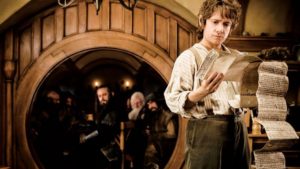 The film is decidedly lighter in tone at the beginning, which is only natural when you’re in the rolling hills and Hobbit holes of the Shire. The film, and trilogy as a whole, grows darker as it progresses and the level of fun I have watching them decreases with it. This change in tone is to be expected considering the story progression but I feel the trilogy pushes it too far. While The Lord of the Rings also grows increasingly darker, it suits that story in ways it doesn’t with The Hobbit. In terms of tone they are very different beasts and frequently The Hobbit tries to tap into the feel of the earlier, darker films too much and forgets it’s based on a children’s book.
The film is decidedly lighter in tone at the beginning, which is only natural when you’re in the rolling hills and Hobbit holes of the Shire. The film, and trilogy as a whole, grows darker as it progresses and the level of fun I have watching them decreases with it. This change in tone is to be expected considering the story progression but I feel the trilogy pushes it too far. While The Lord of the Rings also grows increasingly darker, it suits that story in ways it doesn’t with The Hobbit. In terms of tone they are very different beasts and frequently The Hobbit tries to tap into the feel of the earlier, darker films too much and forgets it’s based on a children’s book.
An Unexpected Journey even contains songs which act as an interesting variable when comparing the different films. The songs manage to fit quite well in this first film, whether playful Dwarvish ballads or the Goblin King’s gleeful murderous chants, but it’s telling that there are no songs in the following two films of the trilogy. Or if there are, I don’t remember them. They just wouldn’t fit with the darker tone. I feel like the entire trilogy should be light enough to feature such songs instead of barreling towards the depressing atmosphere of The Lord of the Rings.
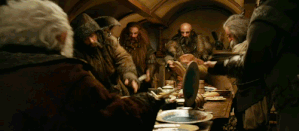 That desire to embrace the feel of the LotR films is both a blessing and a curse. On one hand it’s fun to see familiar faces again and more of Peter Jackson’s version of Middle Earth, but you’ll also never truly be able to recapture the magic. Nor should you. As I’ve previously said, The Hobbit is a very different type of story than The Lord of the Rings. A simpler child’s tale, not a war epic. An Unexpected Journey is an adaptation of The Hobbit at its core, but if I remember correctly that lessens as the trilogy continues, the small subplot of LotR setup becoming unnaturally dominant. When I do my best to push away the nostalgia I feel, it’s the pure The Hobbit scenes and style that works best, not the aping of LotR.
That desire to embrace the feel of the LotR films is both a blessing and a curse. On one hand it’s fun to see familiar faces again and more of Peter Jackson’s version of Middle Earth, but you’ll also never truly be able to recapture the magic. Nor should you. As I’ve previously said, The Hobbit is a very different type of story than The Lord of the Rings. A simpler child’s tale, not a war epic. An Unexpected Journey is an adaptation of The Hobbit at its core, but if I remember correctly that lessens as the trilogy continues, the small subplot of LotR setup becoming unnaturally dominant. When I do my best to push away the nostalgia I feel, it’s the pure The Hobbit scenes and style that works best, not the aping of LotR.
So, with that in mind, it’s surprising that out of the three films this one feels the most like The Lord of the Rings to me. At the most basic level that makes sense because the titular unexpected journey is one that we’ve seen previously trodden. The film features many of the same locations as the first film of that earlier trilogy; from the Shire to Weathertop, Rivendell to under the Misty Mountains. It’s wonderful to inhabit Middle Earth once again and the film absolutely nails the environments. It absolutely feels like the same world as LotR.
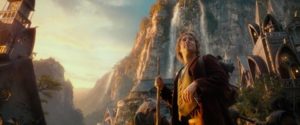 The trilogy has yet to have its identity crisis, spawned from failing to balance an adaptation of The Hobbit with creating a prequel to The Lord of the Rings, but the beginnings of it are there. The darker the films get and the more they try to tap into the tone of the previous trilogy, which is uncapturable, the more it destroys what makes The Hobbit great. But that’s to come, because, despite being a much lighter adventure film, The Unexpected Journey manages to feel like LotR when it’s not trying so hard to and is simply just existing in the same world.
The trilogy has yet to have its identity crisis, spawned from failing to balance an adaptation of The Hobbit with creating a prequel to The Lord of the Rings, but the beginnings of it are there. The darker the films get and the more they try to tap into the tone of the previous trilogy, which is uncapturable, the more it destroys what makes The Hobbit great. But that’s to come, because, despite being a much lighter adventure film, The Unexpected Journey manages to feel like LotR when it’s not trying so hard to and is simply just existing in the same world.
The scene that I think captures the tone and feel of my desired adaptation of The Hobbit is the one featuring the three Trolls, which I absolutely love. The voices and performances of the Trolls are spot on and feel like they belong to the same world as The Lord of the Rings while also very much fitting with the lighter style of The Hobbit. The comedy works well and so does the CGI. This isn’t always the case (which I’ll get to later) but the Trolls look fantastic with the digital effects aiding the performances of the actors rather than smothering them, something the WETA team does so well with Gollum.
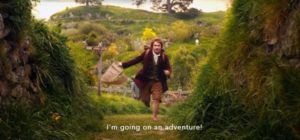 Taking over from an aged Ian Holm, Martin Freeman steps in to play the younger Bilbo and offers a very, very Martin Freeman performance. I think he may be a bit too animated and quirky for my taste, and he often makes about eight different facial expressions and hand movements when one would have done just fine. He’s charming in the role but sometimes crosses the line into becoming annoying. Bilbo does have a nice arc throughout the film, with him becoming a valued member of the group, not just in Thorin’s eyes but his own as well. In fact, his personal journey feels complete by the end of the film and I wonder how the following two films build on his character, if indeed they do.
Taking over from an aged Ian Holm, Martin Freeman steps in to play the younger Bilbo and offers a very, very Martin Freeman performance. I think he may be a bit too animated and quirky for my taste, and he often makes about eight different facial expressions and hand movements when one would have done just fine. He’s charming in the role but sometimes crosses the line into becoming annoying. Bilbo does have a nice arc throughout the film, with him becoming a valued member of the group, not just in Thorin’s eyes but his own as well. In fact, his personal journey feels complete by the end of the film and I wonder how the following two films build on his character, if indeed they do.
And then we get the Dwarves. Using that collective term feels right to describe them because they very much are a collective entity rather than individuals. This isn’t the Fellowship where each character was unique and had their own arc and journey, and it doesn’t need to be. The 13 Dwarves each get a moment or two to shine in the film but often these moments do little but show what individual identities they do have are pretty basic. There’s the fat one, the one with an axe in his head, and that one played by James Nesbitt. Individually, they fit into Snow White-style simple personalities but together as a group they’re a lot of fun.
 Upon this revisit of the film, it’s that sense of fun that really stood out and worked for me. When the film surrenders to the lighter tone it sometimes tries hard to avoid, it’s a very entertaining watch and the Dwarves as a vehicle for comedy rather than drama or plot often works. While there are moments of danger and peril, the film does have a sense of adventure to it, and I like that it’s not as dark or serious as The Lord of the Rings. There’s no Boromir scene like the first film of the earlier trilogy; instead the darkest moment is the death of a hedgehog named Sebastian and he even gets resurrected 20 seconds later.
Upon this revisit of the film, it’s that sense of fun that really stood out and worked for me. When the film surrenders to the lighter tone it sometimes tries hard to avoid, it’s a very entertaining watch and the Dwarves as a vehicle for comedy rather than drama or plot often works. While there are moments of danger and peril, the film does have a sense of adventure to it, and I like that it’s not as dark or serious as The Lord of the Rings. There’s no Boromir scene like the first film of the earlier trilogy; instead the darkest moment is the death of a hedgehog named Sebastian and he even gets resurrected 20 seconds later.
Thorin is the only Dwarf, apart from maybe Balin at a push, to have any sort of character drama or development. I’ve always liked Richard Armitage as an actor since his days on the BBC’s Robin Hood series and I enjoy him in the role as this trilogy’s answer to Aragorn, only slightly grumpier. Gandalf leads the adventure along with Thorin and it’s a joy to see Ian McKellan back in the role, especially as Gandalf the Grey rather than Gandalf the White. I’ve always enjoyed the more charming earlier incarnation of the character. While I feel most of Gandalf’s best moments are in the LotR trilogy, his conversation with Galadriel about why he chose Bilbo to come along on the quest does rival many of them. Maybe it’s just because in that scene McKellan got to actually act against a fellow actor rather than by himself in a green screen set.
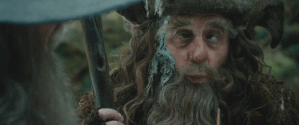 But Gandalf isn’t the only wizard to aid the company of Dwarves. Radagast makes an appearance, with Sylvester McCoy bringing a level of kookiness to the character that only a former Doctor Who can. Although, I fear he may be a little too silly, if that’s possible for a character with bird shit matting their hair. But the strangest thing is that Jackson and his fellow writers decided to pair the goofiest character with the darkest subplot. Radagast travels to Dol Guldor where he encounters Sauron before reporting his findings to Gandalf, who in term announces this information to the skeptical White Council in Rivendell.
But Gandalf isn’t the only wizard to aid the company of Dwarves. Radagast makes an appearance, with Sylvester McCoy bringing a level of kookiness to the character that only a former Doctor Who can. Although, I fear he may be a little too silly, if that’s possible for a character with bird shit matting their hair. But the strangest thing is that Jackson and his fellow writers decided to pair the goofiest character with the darkest subplot. Radagast travels to Dol Guldor where he encounters Sauron before reporting his findings to Gandalf, who in term announces this information to the skeptical White Council in Rivendell.
While it’s cool to see Saruman, Galadriel and Elrond again, the White Council scene itself feels a little forced. The setup for The Lord of the Rings trilogy doesn’t quite fit with the rest of the film and, even for me as a big fan of the films, is a little hard to follow at points. The setup for the LotR films feels unnecessary considering how well those films quickly explained everything on the fly. If anything, I’m more confused by Sauron’s return with the new information we get in The Hobbit; the opposite effect the scene was supposed to have.
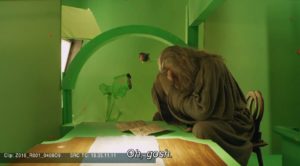 However, this unnecessary Lord of the Rings setup isn’t the only major problem with the film. An Unexpected Journey relies far too heavily on CGI and often has the feel of the Star Wars prequels about it. There’s a fascinating parallel to be made there, with both prequel trilogies being incredibly bloated and having an over-reliance of digital effects. Some of the CGI does look fantastic, with the establishing shot of Weathertop and the stunning sight of the Eagles flying coming to mind. But too often the film looks too digitally clean and flat. The contrast between the great visual effects and the terrible ones is bafflingly large. It’s very apparent when the film switches from the real performers to their CGI counterparts and the scene with Radagast being chased just looks awful. It completely takes you out of this lovingly crafted world where everything physical has incredible production value.
However, this unnecessary Lord of the Rings setup isn’t the only major problem with the film. An Unexpected Journey relies far too heavily on CGI and often has the feel of the Star Wars prequels about it. There’s a fascinating parallel to be made there, with both prequel trilogies being incredibly bloated and having an over-reliance of digital effects. Some of the CGI does look fantastic, with the establishing shot of Weathertop and the stunning sight of the Eagles flying coming to mind. But too often the film looks too digitally clean and flat. The contrast between the great visual effects and the terrible ones is bafflingly large. It’s very apparent when the film switches from the real performers to their CGI counterparts and the scene with Radagast being chased just looks awful. It completely takes you out of this lovingly crafted world where everything physical has incredible production value.
The Dwarves leave Rivendell and unexpectedly find themselves captives of a legion of Goblins who live deep in the Misty Mountains. Where once such creatures would be performers caked in latex, the nightmarish beings are now digital characters or actors that have been so ‘enhanced’ with CGI that their performances are totally hidden. I don’t want to be some anti-CGI guy complaining that “it was better back in my day” but the practical Orcs and Goblins of The Lord of the Rings are so much more effective than the creatures in The Hobbit. I know the scale of scenes would have to be reduced to make costumed monsters work, but after seeing the finished digital version I have no doubt it would be worth it. The film would work better with a reduction in scale. It’s the smaller, more personal and realistic action moments that are the most effective. Every time a ‘real’ Orc appears, like the leader of the Warg hunting party, I feel much more engaged and the world seems more genuine.
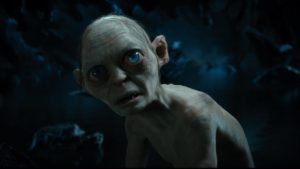 While the Dwarves are facing CG Goblins, Bilbo falls into the depths of the Misty Mountains and encounters a familiar foe and his precious ring. Gollum, now an iconic cinematic figure, makes his return to the screen for the famous ‘Riddles in the Dark’ chapter of the book, the adaptation of which is probably my favourite scene of the film, if not the trilogy. These films are seemingly at their best when focusing on just two characters, often Bilbo and a computer-generated creature, in a battle of wits. First the Trolls, now Gollum and then Smaug in the sequel. The scene is funny and tense, and thankfully doesn’t cut away to the action happening on the levels above. We stay with these two characters for a well-paced and acted scene that draws on what we saw and will become important in The Lord of the Rings but is still The Hobbit through and through. Andy Serkis is once again incredible as Gollum and, compared to the ropey CGI in other scenes, I was shocked at how good Gollum looked. Even in 2020 it’s some of the best I’ve ever seen. It’s a pleasure to revisit the creature that started this performance capture revolution and the sequence might be my favourite to feature Gollum across both trilogies.
While the Dwarves are facing CG Goblins, Bilbo falls into the depths of the Misty Mountains and encounters a familiar foe and his precious ring. Gollum, now an iconic cinematic figure, makes his return to the screen for the famous ‘Riddles in the Dark’ chapter of the book, the adaptation of which is probably my favourite scene of the film, if not the trilogy. These films are seemingly at their best when focusing on just two characters, often Bilbo and a computer-generated creature, in a battle of wits. First the Trolls, now Gollum and then Smaug in the sequel. The scene is funny and tense, and thankfully doesn’t cut away to the action happening on the levels above. We stay with these two characters for a well-paced and acted scene that draws on what we saw and will become important in The Lord of the Rings but is still The Hobbit through and through. Andy Serkis is once again incredible as Gollum and, compared to the ropey CGI in other scenes, I was shocked at how good Gollum looked. Even in 2020 it’s some of the best I’ve ever seen. It’s a pleasure to revisit the creature that started this performance capture revolution and the sequence might be my favourite to feature Gollum across both trilogies.
Bilbo escapes Gollum’s cave with the all-important ring, sparing the pitiful creature’s life in a great moment that makes you wonder how events would have transpired if he chose to end Gollum’s life, and meets up with the Dwarves after they’ve made their own daring escape. But the film isn’t over yet because Azog, the Pale Orc, makes his return. Azog is a pretty poor villain. He follows some nebulous unexplained oath to wipe out the line of Durin and previously faced Thorin once before, which we see in an admittedly cool flashback. But why does he want to kill Dwarves? I have no idea. He’s just the bad guy, and a large CGI one at that. I like some of his physicality and design, mainly the large metal spike he has for a hand, but the computer-generated monstrosity never feels like a tangible threat who is occupying the same space as our heroes. It’s hard not to compare him to Lurtz from Fellowship. That villain felt real and dangerous, from his physical and disgusting mud birth to his brutal death, whereas Azog just falls flat.
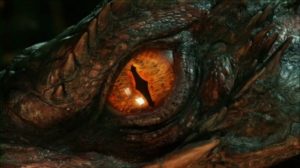 And then, after a daring escape from Azog and an inferno with help from the Eagles (not the band), the film comes to an end. It’s a slightly odd ending with little conclusion to the plot but it does feature a nice summary of Bilbo’s personal odyssey up to this point, with him being truly accepted by Thorin. Splitting this pithy children’s story into three epic films was bound to birth a bizarre structure. But I think I’ll honour the films and leave my discussion of that until the next article, where it becomes much more of a problem, and end abruptly myself. Although, the final image of Smaug’s eye opening as he awakens from his slumber is a decent tease for what is to come.
And then, after a daring escape from Azog and an inferno with help from the Eagles (not the band), the film comes to an end. It’s a slightly odd ending with little conclusion to the plot but it does feature a nice summary of Bilbo’s personal odyssey up to this point, with him being truly accepted by Thorin. Splitting this pithy children’s story into three epic films was bound to birth a bizarre structure. But I think I’ll honour the films and leave my discussion of that until the next article, where it becomes much more of a problem, and end abruptly myself. Although, the final image of Smaug’s eye opening as he awakens from his slumber is a decent tease for what is to come.
I enjoyed An Unexpected Journey more than I thought I would when I picked up the Blu-ray that lazy afternoon. It’s a film with significant issues and I don’t plan on adding it to my regular rewatch schedule of The Lord of the Rings trilogy but it is quite a fun watch. It’s well paced until the final 30 minutes and I found it to be quite an easy and relaxing watch, as well as just being good fun. For most of the running time it has that spirit of adventure that I want an adaptation of The Hobbit to have. While I’m eager to rewatch the following two films in the trilogy to see if my opinion has changed, I think I can say with some certainty that An Unexpected Journey is my favourite of the three. Bilbo ends the film saying “I do believe the worst is behind us”. Sadly, it’s ahead.
What are your thoughts on The Hobbit films? Do you agree that An Unexpected Journey is the best of the trilogy? Let me know in the comments and be sure to geek out with me about TV, movies and video-games on Twitter @kylebrrtt.




